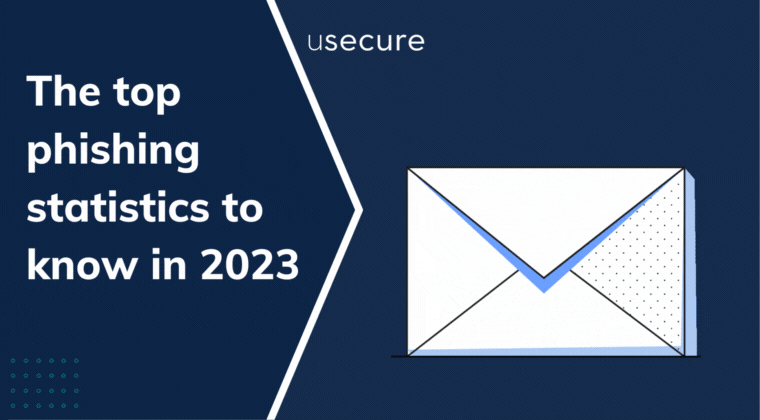7 Top tips for conducting effective phishing simulations
Cyber-attacks and data breaches can be catastrophic for businesses. To help protect your company, you should have a phishing simulation program in place to detect potential threats and train users to avoid falling victim to malicious emails. Phishing simulation is an essential part of any cybersecurity programme, but only if it is done right. To ensure that your phishing simulations generate the desired effects, here are 7 top tips to help you get the most out of them.
1. Create authentic-looking simulations
2. Vary the level of difficulty
3. Use a variety of distribution methods
4. Test different types of attacks
5. Conduct simulations regularly
6. Provide feedback to employees
7. Encourage a culture of security
Start conducting your phishing simulations
1. Create authentic-looking simulations
To create an effective phishing simulation program, you need to ensure that the tests look sufficiently similar to real-world attacks. Make the simulation as realistic as possible, and use authentic-looking emails and social media messages that mimic the appearance and tone of real phishing attacks.
Sophisticated attackers will use more advanced techniques that are designed to trick users into making mistakes despite their training so it is important to create simulations that mimic actual threats as closely as possible. Use a variety of methods including frames, redirects, and even malicious URLs to make sure the simulation covers a broad range of malicious activity.
2. Vary the level of difficulty
To challenge employees and test their knowledge, use simulations that vary in level of difficulty. It is possible to tailor the difficulty level of phishing simulations to the individual recipient.
For example, you could create more subtle signs in the simulation for employees who have a strong understanding of phishing tactics and are less likely to fall victim to a real-world attack. You can also make the test more difficult by requiring more knowledge or expertise on the part of the victim. For instance, targeting people with a specific technical skill or knowledge of a particular software or system.
It is essential to constantly assess the individual recipient's knowledge and experience with phishing attacks and tailor the difficulty level of the simulation accordingly to ensure that they are properly challenged and prepared to defend against cybersecurity threats.
3. Use a variety of distribution methods
There are multiple platforms that attackers may use to distribute phishing attacks: emails, social media, SMS/Text messages, instant messaging apps and malvertising etc. You may want to test employees' ability to identify phishing attacks across these platforms.
It's important to choose an appropriate distribution channel for your phishing simulations because it can impact the realism and effectiveness. For example, if you're trying to test users' awareness of phishing attacks delivered via email, sending the simulation through a social media platform may not be as effective because it's not a typical delivery method for phishing attacks.
However, before choosing to use a specific distribution channel, it's worth paying attention to protect your users' privacy and prevent any harm to your organisation's reputation. For example, if you're conducting a phone-based phishing simulation, it's important to ensure that you have the proper consent from users before making the call.
4. Test different types of attacks
Test different types of attacks, such as spear phishing, whaling, ransomware, vishing, SMS phishing, clone phishing, website spoofing, pharming, and pop-up phishing etc, to ensure that employees are prepared to identify and respond to a wide range of phishing threats. It's important to equip your staff with the latest knowledge of different types of cybersecurity attacks.
5. Conduct simulations regularly
Conducting simulations regularly is beneficial to your business on combating constantly evolving phishing tactics and techniques. It ensures your employees are consistently aware of the risks of phishing attacks and are able to identify and respond to them effectively.
Also, it helps your staff stay up-to-date with the latest phishing news and threats. By collecting phishing simulation results on a regular basis, you can also gain insights to refine your training models and maximise the outcomes of your phishing tests.
6. Provide feedback to employees
After the simulation, provide feedback and guidance to employees on how they did and how they can improve their ability to identify and respond to phishing attacks.
Thank them for participating and let them know that you appreciate their efforts.
Encourage employees to ask questions about anything they don't understand or want more information on. Provide additional training and resources to employees who struggled with the simulation, This could include things like online training modules or exercises that help employees spot phishing attacks.
All these help to build trust and create a positive atmosphere for learning.
7. Encourage a culture of security
Encourage a culture of security within your organisation is vital. You should often remind employees about the importance to identify and avoid interacting with phishing attacks. This is crucial for protecting your systems, assets and sensitive information. Recognising and rewarding employees for their help in maintaining security can help encourage a culture of security within the organisation.
Start conducting phishing simulations
Phishing simulation is an essential way to indicate potential weaknesses in your defences against phishing attacks. Make sure your employees know these tips and are well-prepared to defend against real-world attacks. Wondering how phishing simulations can help improve your company’s cybersecurity? Give our 14-day free phishing simulation a go or book a demo to learn how we can help strengthen your cybersecurity proctection.
.png?width=760&height=300&name=httpswww.usecure.ioenfree-employee-phishing-test%20(1).png)

